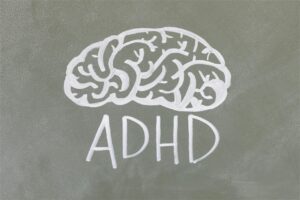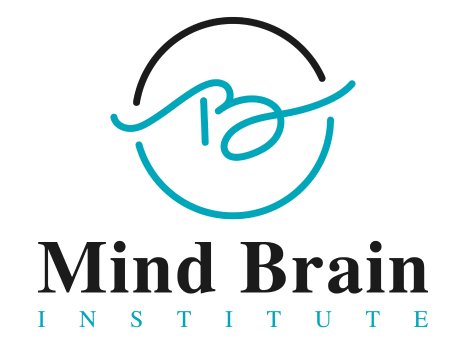
- Posted By Dr. Anuranjan Bist
- Comments 0
Neurofeedback for ADHD: Clinical Benefits and Limitations
Table of Contents
Exploring the Promise of Neurofeedback for ADHD
ADHD life is like attempting to hear the radio amidst continuous static. Effortful attention drifts, tasks accumulate, and impulse control is an everyday struggle. While medication and therapy have long been established and proven treatments, there is increasing excitement regarding a non-medication form of brain-training Neurofeedback for ADHD.
This therapy is designed to make people “train” their brains to work better, perhaps enhancing attention, mood, and self-control. As an increasing number of parents, adults, and professionals are seeking it as an adjunct or alternative to medication, the time has come to establish what Neurofeedback can and cannot do.
Getting to Know ADHD
ADHD or Attention Deficit Hyperactivity Disorder is a neurodevelopmental disorder that may present in children or adults. Three main symptoms of ADHD are having trouble sustaining attention, being impulsive in decision-making, and being hyperactive. These characteristics can hinder education, employment, and interpersonal relationships, and most characteristically lead to frustration and low self-esteem.

ADHD is not just an issue of being “easily distracted”, but an alteration in how the brain functions and manages. Individuals with ADHD can have abnormal patterns of brainwave activity, which influence how they process information and control impulses.
Historically, treatment is drugs, behavior therapy, or a combination of the two. However, drugs don’t work for everyone, and some people find side effects a problem. Interest in alternative treatments, including Neurofeedback for ADHD, is consequently increasing. Through direct action on brainwave activity, Neurofeedback is intended to treat the neurological substrate for ADHD symptoms rather than merely manage them.
What is Neurofeedback?
Neurofeedback or EEG biofeedback is a form of treatment that applies real-time displays of brain activity to enable a patient to learn to regulate their brain activity independently. Sensors are put on the head in one session to record electrical brain activity. This information is fed into a computer that converts it into visual or auditory stimulation in the form of an animated graph, a changing tone, or a computer game that progresses as intended patterns are formed by the brain.

The concept is straightforward: if the brain is instantly informed of what it is doing, it will learn to move and form healthier patterns. While Neurofeedback has been utilized in the treatment of anxiety, insomnia, and epilepsy, the most promising area of use is Neurofeedback for ADHD. By training attention-related brainwave patterns and diminishing inattention-related ones, it is hoped to enable people to concentrate more and be more in control of themselves over time.
How Neurofeedback Affects ADHD
ADHD is most commonly linked to a state of brainwave imbalance, specifically an elevated ratio of slow theta waves to high beta waves in some areas of the brain. Theta waves are linked to daydreaming and distractibility, while beta waves are linked to active engagement and problem-solving.
In Neurofeedback for ADHD, the objective is to make the brain decrease high levels of theta activity and elevate beta activity in such a manner that a better pattern will be seen. An example session would include playing a computer game while wearing EEG sensors on your head, say, a computer game where the game won’t move unless your brain produces the correct brainwave pattern. By repetition, many times over a series of sessions, the brain “learns” more effective ways of operating.
Most practitioners suggest 30–40 sessions with clear improvement, but it depends. Although improvement is usually incremental, some notice improved concentration, less impulsivity, and a better temperament after a few sessions.
Clinical Benefits
Neurofeedback research on ADHD has produced encouraging but occasionally conflicting results. A number of clinical trials indicate that Neurofeedback improves attention, decreases impulsivity, and improves emotional control in children and adults. For instance, subjects indicated they are able to sustain attention better, have better control over their response, and are able to cope with stress after Neurofeedback training.
One of the most compelling arguments is that Neurofeedback is non-invasive and drug-free, and thus it’s very attractive to those who are intolerant to the side effects of medications such as sleep disturbance, loss of appetite, or mood changes. Neurofeedback was also employed in conjunction with medication to decrease the dose and the side effects.
Those with ADHD tend to exhibit enhanced school performance, such as increased consistency in homework completion and the ability to stay on-task in class. The adults will observe the improvement of workplace productivity and in social situations.
Even research maintains that the benefits of Neurofeedback are long-term because the brain retains its new control functions. But there is inconsistency, and not everybody is altered radically. Individual differences like age, severity of ADHD, and degree of compliance with training can affect the outcome.
Limitations and Challenges
Even though Neurofeedback for ADHD is promising, it has its issues. For one, results across different studies are not always consistent; some demonstrate clear positive effects, and others demonstrate small or modest benefits over placebo controls. This has created a controversy within the scientific literature regarding whether it works or not.
Another impediment is the time commitment. Neurofeedback training consists of two or three sessions a week for a few months. It may be stressful and time-consuming for working individuals and families. Expenses are another impediment. Prices for Neurofeedback sessions range from $50 to $150 per session, and when 30–40 sessions are required, the expense can be hefty, often not covered by insurance.
There is also the matter of practitioner skill. Since Neurofeedback is a professional skill, outcomes may be significantly dependent on the education and experience of the practitioner. Last but not least, attention can be strengthened and impulsivity decreased through Neurofeedback, but it can possibly not cure all of the ADHD difficulties, like organizational ability and emotional stamina, without the inclusion of behavioral treatment.
How Neurofeedback Compares to Other Treatments for ADHD
ADHD is generally treated with a blend of treatments that cover medications, behavior therapy, lifestyle changes, and educational assistance. Unlike drug treatment, Neurofeedback for ADHD attempts to train the brain to regulate itself, with a long-term outcome of improvement without constant drug use. As opposed to behavior therapy, which is focused on educating patients in coping mechanisms, Neurofeedback targets the neurological patterns that drive symptoms.
Clinicians are apt to prescribe the use of Neurofeedback in conjunction with other treatments for optimal functioning. For instance, the child could get Neurofeedback training while learning organizational skills through coaching. Such combined treatment can treat both the biological and behavioral dimensions of ADHD.
Is Neurofeedback for You?
Whether Neurofeedback is the best choice for ADHD is situation-dependent. Think about your age, level of ADHD severity, previous treatment, expense, and availability of a qualified professional. Keep in mind also that Neurofeedback is a slow process of taking small steps and that attendance and consistency of the patient are essential.
If you or your child experienced drug side effects or is seeking a complementary treatment for the addition of concentration and self-discipline, Neurofeedback might be worth exploring. Before you begin, discuss this with an experienced mental health clinician who can evaluate your individual needs and provide an opinion as to whether or not this treatment would be beneficial for you.
Conclusion
Neurofeedback for ADHD offers a safe, one-of-a-kind form of brain training to enhance attention, self-regulation, and emotional balance. It’s no magic pill, but it does cost effort, time, and money. However, it is a valuable effort as a supplement to or alternative for medication and therapy because it treats the neurologic roots of symptoms.
Like any treatment, the outcome is not across the board, so informed choices matter. Yet with a dose of reality and professional support, Neurofeedback can be part of the journey towards opening the door to more clarity, calmness, and confidence in daily life.


